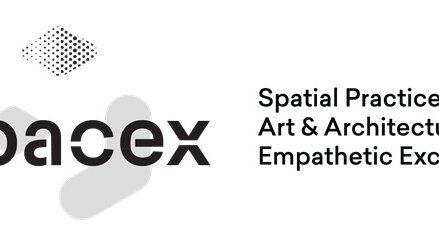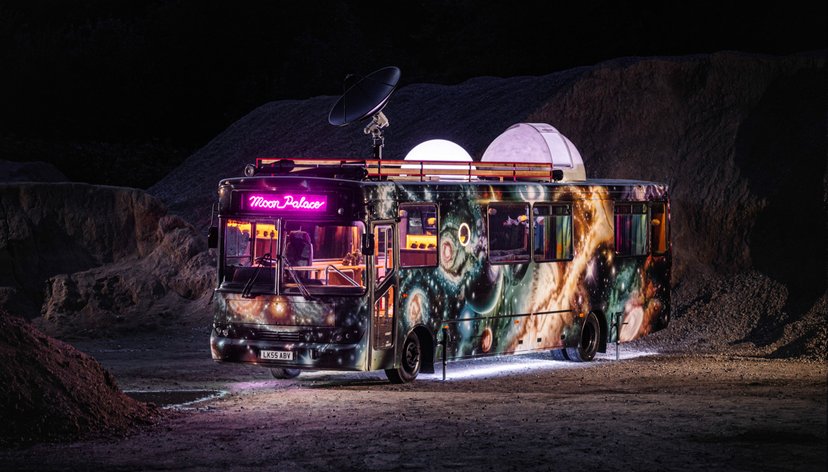
Melanie's multidisciplinary practice involves modes of non-fiction storytelling – through space/objects/text/moving image and sound.
Melanie was born in Hollywood, West Midlands. She now lives and works in London and attended LCC, Byam Shaw and the RCA and has recently completed a practice based PhD at the University of Reading.
In 2017/18 she published co-authored articles with Dr Esther Leslie in Parallax Journal, Effects Journal, the online journal Studies in the Maternal, and cabinet magazine. They have also co-authored a book Deeper in the Pyramid (2018), and have previously produced a comic The Ur-Phenomenon (2013) and a newspaper The Urpflanze (2010). They devised a series of performance lectures based on the book for the Delfina foundation (2016), UCL (2016), Birkbeck (2017) the Atlantic Project (2017), Lux (2017) and Primary (2018).
Solo exhibitions include Deeper in the Pyramid at Grand Union, (Birmingham), Primary (Nottingham) and Banner Repeater, (London all 2018) and The Urpflanze Part 2 (2013) and The Urpflanze Part 1 (2010) at the Drawing Room and Flat Time House, (London). She has also made solo exhibitions at Space Exchange (Colchester), Chapter (Cardiff), Matt’s Gallery (London) and Arnolfini (Bristol) and exhibited internationally in group exhibitions including Take Me to the River, DRF Biennale, (Osaka, Japan), The Global Contemporary, ZKM Museum of Contemporary Art, (Karlsruhe, Germany) as well as exhibitions in the Museum of Contemporary Photography, (Chicago, USA), Art Gallery New South Wales (Sydney, Australia), Kerlin Gallery (Dublin, Ireland) Project (Dublin, Ireland), Sabine Wachters Gallery, (Brussels, Belgium), Shanghart (Shanghai), Para/Site Art Space, (Hong Kong), Hanart TZGallery, Hong Kong).
She was awarded residencies in Shanghai and Hong Kong (British Council), Mauritius (Gasworks) and in the UK (University of Bristol, The Mothership). She has been shortlisted for the Whitechapel Max Mara Art Prize for Women and was a winner of the Jerwood Drawing Prize.
She has work in the Tate and Government Art Collections, and in Private Collections.
Key details
School, Centre or Area
Expertise
Gallery
More information
Practice
Melanie works with the sensorial and affective capacity of the material, and the inventive ways we reconcile or resist living with the technologies around us– produced as they are in conditions of extraction capitalism. She engages with stories of excess and the absurd imbricated in the production flows and networks of the biotechnocapital, and their ‘ur’ formation in other times and places.
Her forthcoming work Hellmouth - a speculation on toxicology, will take the form an animation, a public sculpture and a lecture. It starts with mercury, dental amalgams and the origins of money. It connects mercury’s toxic vapours and the delirium it induces through organic poisoning with the digital cloud, the toxicology of digital systems and novel forms of sensory intoxication.
Deeper in the Pyramid is a recent new body of work comprising of animation, ceramic and steel sculpture, a filmed performance and a publication in a graphic novel format, written in collaboration with Esther Leslie.
In Deeper in the Pyramid we are taken on a journey of lactic abstractions, through the webs of bio-invasion and collective fantasy that interconnect various life forms through milk, its technologies and representations. The ontologies of species and gender have always been shaped by our relations with this primal liquid, and ensuring a ready supply has driven research in genetics, fertility and robotics. It is now open for radical transformation as new bio-organisms emerge, and real science merges with the fantastic.
Milk is polymorphic with an inclination for promiscuous collaboration – whether it be with bacteria, with cartoon avatars, with economics pornography, racial politics or genetic re-calibration. It is fundamental to all mammalian bodies, whilst also being one of the most technologised fluids on earth. Deeper in the Pyramid engages with the bio-economy and its representations, through the webs of care, exploitation and collective fantasy that interconnect life forms at every scale.
Other Recent Projects include The Nexus and The Ur-Pflanze (parts 1 and 2) – both exploring the myths and aspirations of technoscience: new hopes for the bioeconomy and for synthetic biology. It drew on intimacies of knowledge at the nanoscale to the spectre of gargantuan monstrosities, an intrigue in the primordial to the yet-to-be-created. It featured actual and mimetic giant fruits, animation, books, ceramic sculpures and a descent from a great height.
Mel Jackson has been developing an aesthetic that allows her to reflect on the manner in which she is implicated in the condition of her subjects…She tries out tactics of representation which remain provisional rather than definitive, treating the gallery as a stage for experimentation with art roles. Here is mimicry, documentation, myth fabrication, cultural voyeurism, performance, animation, political commentary, music, installation, craft and the cultivation of aesthetic delight. The irresolvable contradictions in this set of maneouvres keeps her own complicity visible as part of the circulation of meanings around her art.
Mark Harris
Awards
AHRC Doctoral Award, 2016–18
Individual Artists Award, ACE, 2018
Travel Award, British Council, 2015
Current and recent projects
Jackson’s is an expansive, ambitious and intuitive work not easily reducible to cursory description. Her attention to the illusory surface textures of protean forms is not solely attentive to liquid crystals but extends metaphorically to other social and scientific developments (a fictional Jack-and-the- Beanstalk becomes a modern genetic scientist, or crystals self-organise into a palace whose display function changes consumer society forever)... her work carries within it a reflection on the new nature and task of the contemporary artist’
– Isobel Harbison
For her doctoral thesis Melanie Jackson set out a mode of representation that refuses western ideas of ‘capture’ or constructions of the realistic, through combinations of metonymic extension, text, picturing, abstraction to approach a ‘metasemiotic real’ or a world-making in art that can address the protean complexity of lived and social experience.
She is interested in supporting multidisciplanary approaches to research, including multidisciplinary methodologies of making. She draws on many scholarly subject areas including anthropology, science and technology, politics, history, archeology, ethology and gender – including the humanities engagements with the ‘ontological turn’. Non scholarly research includes journalism, graphics, product design, construction and pop culture.
External collaborations
- Guest lecturer in Berlin, Hong Kong, Mauritus and Ireland and in various UK colleges including Birmingham, Manchester, UCE, Plymouth, Southampton, Chelsea, UCL, Birkbeck.
- External examiner roles at the University of Leeds and Camberwell College of Arts, and am currently external examiner at UEL.
- Member of the Advisory Panel for the Arts Catalyst.














